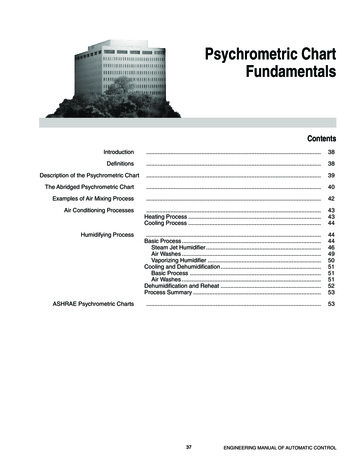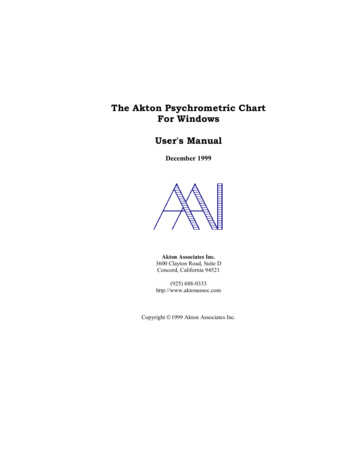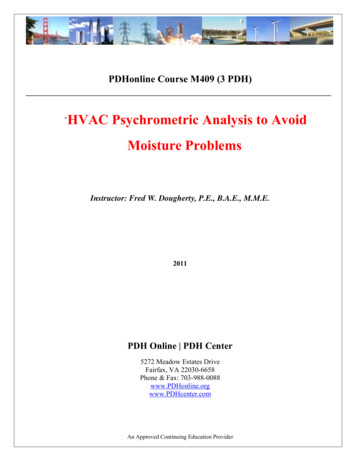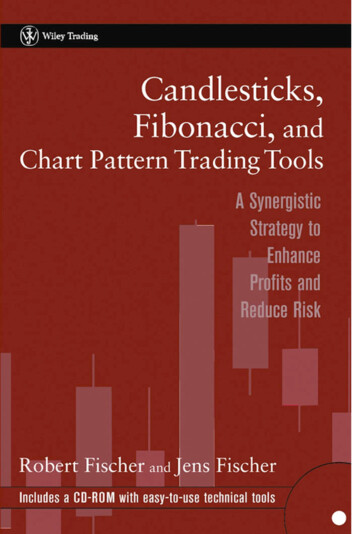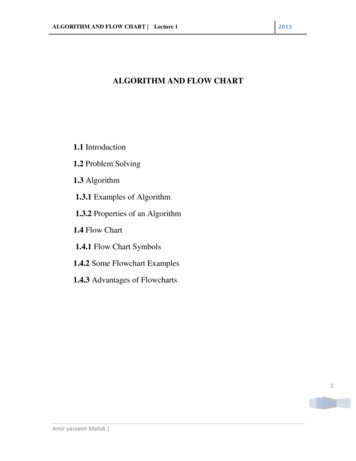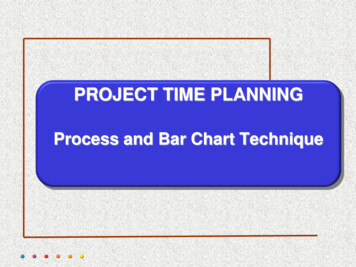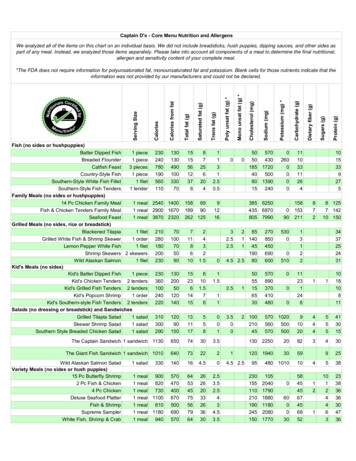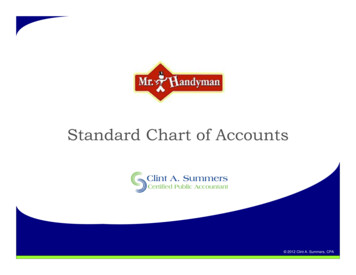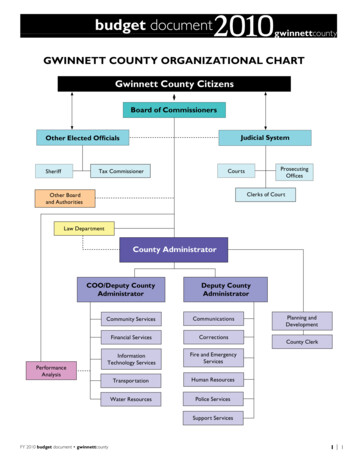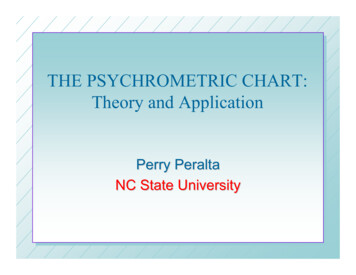
Transcription
THE PSYCHROMETRIC CHART:Theory and ApplicationPerry PeraltaNC State University
PSYCHROMETRIC CHARTIdentify parts of the chart Determine moist air properties Use chart to analyze processesinvolving moist air
Psychrometric chart: Example 1Given:T 25 CTw 20 CRequired:(a) RH, (b) Tdp, (c) HR, (d) v, (e) h
57.5 kJ/kg d.a.63%20.0 C17.6 C12.6 g/kg d.a.25 C0.86 m3/kg d.a.
PSYCHROMETRIC PROCESSES
Sensible Heating or Coolinga psychrometric process that involvesthe increase or decrease in thetemperature of air without changing itshumidity ratio Example: passing moist air over a roomspace heater and of kiln air over theheating coils
12
Sensible heating: Example 5
T3 70ºCT2 60ºCTw2 50ºC Tw3 ?RH2 58.8% RH3 ?
6%51 C50 C37.275.5 kJ/kg d.a.58.8%287.0 kJ/kg d.a.260 C370 C
Heating and Humidifying a psychrometric process that involvesthe simultaneous increase in both thedry bulb temperature and humidity ratioof the air
210
Heating and humidifying: Example 7Two and a half cubic meters of lumber is being driedat 60 C dry bulb temperature and 52 C wet bulbtemperature. The drying rate of the lumber is 12.5kg of water per hour. If outside air is at 27 Cdry bulb temperature and 80% relative humidity,how much outside air is needed per minute to carryaway the evaporated moisture?
80%52 C2127 C92 g/kg d.a.18 g/kg d.a.60 C0.87 m3/kg d.a.
Heating and humidifying: Example 7 HR (92.0 – 18.0) g/kg dry air 74.0 g/kg dry airwa1 drying rate/ HR (12.5 kg/hour)/(0.074 kg/kg dry air) 168.9 kg dry air/hourVF1 (wa1)(v1) (168.9 kg dry air/hour)(0.87 m3/kg dry air) 147 m3/hour 2.45 m3/minute
Cooling and Dehumidifying a psychrometric process that involvesthe removal of water from the air as theair temperature falls below the dewpoint temperature
12
Cooling and dehumidifying: Example 9Moist air at 50 C dry bulb temperature and 32%relative humidity enters the cooling coil of adehumidification kiln heat pump system and iscooled to a temperature of 18 C. If the drying rateof 6 m3 of red oak lumber is 4 kg/hour,determine the kW of refrigeration required.
32%115.7 kJ/kg d.a.50.8 kJ/kg d.a.28.8 C112.9 g/kg d.a.218 C25.2 g/kg d.a.50 C
Cooling and dehumidifying: Example 9 HR (25.2 – 12.9) g water/kg dry air 12.3 g water/kg dry airdrying ratewa HR4 kg waterh kgwater0.0123kg dry airkg dry air 325.2h
Cooling and dehumidifying: Example 9 h (115.7 – 50.8) kJ/kg dry air 64.9 kJ/kg dry airq ( h ) ( w a ) kJkg dry air 64.9325.2 kgdryairh kJ 21105.7 5.9 kWh
Adiabatic or Evaporative Cooling a psychrometric process that involvesthe cooling of air without heat loss orgain. Sensible heat lost by the air isconverted to latent heat in the addedwater vapor
21
Evaporative cooling: Example 10Referring to Figure 21, air at state point 1 (65 Cdry bulb temperature and 57 C wet bulb temperature)experiences a temperature drop of 3 C as it passesthrough the 1.2-m wide stack of lumber. Determinethe properties of the air at state point 2 and comparethem with those at state point 1. If the air is flowingat a rate of 2 meters per second, determine the dryingrate assuming that the volume of the stack of2.5-cm-thick lumber is 2.5 m3. The stack is1.2 m wide x 3.6 m long, and the boards areseparated by stickers 3.8 cm wide x 1.9 cm thick that arespaced 0.6 m apart.
T 62ºCT 65ºCTw 57ºC
Evaporative cooling: Example 10Given: T1 65 C; Tw1 57 CAdiabatic cooling to T2 62 CAir flow rate 2 m/sVolume of lumber 2.5 m3Board thickness 2.5 cmStack dimensions: 1.2 m wide x 3.6 m longSticker dimensions: 3.8 cm wide x 1.9 cm thickSticker spacing 0.6 mRequired:Solution:(a) Properties of the air at state point 2relative to that at state point 1(b) Drying rate
57 C2124.5 g/kg d.a.162 C123.1 g/kg d.a.65 C1.15 m3/kg d.a.1.14 m3/kg d.a.
Evaporative cooling: Example 10(a) At state point 1: T1 65 CTw1 57 CTdp1 56.3 CRH1 66.9%HR1 123.1 g/kg of dry airv1 1.15 m3/kg of dry airh1 387.7 kJ/kg of dry airAt state point 2: T2 62 CTw2 57 CTdp2 56.5 CRH2 77.3%HR2 124.5 g/kg of dry airv2 1.14 m3/kg of dry airh2 387.7 kJ/kg of dry air
Evaporative cooling: Example 10(b) Drying rate ( HR )( w a )VFwa v2VF ( A )( air flow rate )
Evaporative cooling: Example 10 V Pl SsA St Sw Pl St Ss Pl Pw Bt 2.53.6 0.6 A 0.019 * 0.038 3.6 * 0.019 0.6 3.6 *1.2 * 0.025 A 1.47 m 2
Evaporative cooling: Example 10A 1.47 m 2VF ( A )( air flow rate )3mm VF (1.47 m3 ) 2 2.9s s
Evaporative cooling: Example 10m3VF 2.9sVFwa v2m32.9kg dry airs 2.6wa 3ms1.14kg dry air
Evaporative cooling: Example 10kg dry airw a 2.6sDrying rate ( w a )( HR ) kg dry air g Drying rate 2.6 1.4 skgdryair gkg 3.6 13.0sh
Adiabatic Mixing of Moist AirStream A psychrometric process that involvesno net heat loss or gain during themixing of two air streams
231
Adiabatic mixing: Example 11
T2 26.7ºCRH2 80%VF2 28 m3/minT3 43.3ºCTw3 37.8ºCT1 43.3ºCTw1 37.8ºCVF1 112 m3/min
37.8 C13280%26.7 C43.3 C0.87 m3/kg d.a. 0.95 m3/kg d.a.
Adiabatic mixing: Example 11VFwa vm3112kg dry airminutew a1 117.93mminute0.95kg dry airwa2m328kg dry airminute 32.23mminute0.87kg dry air
Adiabatic mixing: Example 11line 1-3w a232.2 0.21line 1-2 w a2 w a1 32.2 117.9Therefore, length of line segment 1-3 is 0.21 timesthe length of line 1-2
37.8 C35.6 C13280%26.7 C40 C 43.3 C0.87 m3/kg d.a. 0.95 m3/kg d.a.
Adiabatic mixing: Example 11T3 40.0 CTw3 35.6 C
a psychrometric process that involves the increase or decrease in the temperature of air without changing its humidity ratio Example: passing moist air over a room space heater and of File Size: 869KBPage Count: 50
